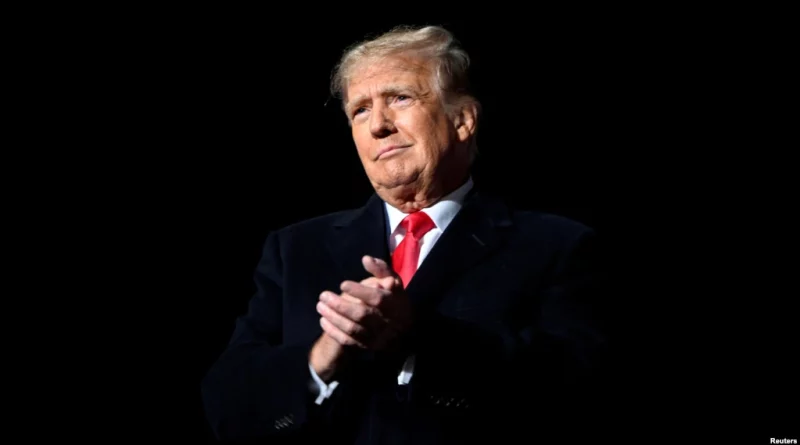Trump as a factor in the midterm elections
Trump as a factor in the midterm elections
American political scientists note that although the final results of the November 8 vote are not yet available, today we can confidently speak of significant gains for the Democrats. Among the main reasons for this momentum, Jim Moore of the University of the Pacific at Oregon State University and Raphael Sonenschein of the University of Southern California at Los Angeles list the Republicans’ lack of coherent recipes for solving economic problems and the declining popularity of Trump’s ideas, which some Republican candidates have continued to promote in the current election.
“‘The ‘red wave’ that Republicans expected didn’t happen, and it happened for two reasons,” Jim Moore, a political scientist and professor at the University of the Pacific at Oregon. – The first is that Democrats have been able to point out that Republicans are pushing Donald Trump’s agenda, and it’s no longer as popular as it was a few years ago. The second is localized regional problems. Typically, elections are looked at as a national vote, but when you take a closer look at elections in a number of states, it is clear that both the personalities of the candidates themselves and voter reaction to local issues in a particular state were at issue. Nationwide, the state of the economy was the main reason why Americans voted this way and not that way. Right behind the economy were crime, abortion, and homelessness, particularly in my region, the northwest coast from California to Oregon. The Democrats, understanding that these were the issues to be discussed, were able to prepare answers. For example, on the economy, they said that the Republicans had no plan to rebuild it, aside from claiming it was in dire straits. That changed the dynamics of the race.”
“Today Republicans are in agony over the election results. They feel – and indeed they do – that they have missed a huge opportunity. As the minority in Congress, which historically almost always takes power in midterm elections, they had every chance. But…the gun didn’t go off,” says Raphael Sonenshine, a political scientist and professor at the University of Southern California in Los Angeles. – The Democrats went into the election with little hope of holding on to the House of Representatives. They can still win this race, by the way, although that is unlikely. But trust me, the Democrats are going to see a victory when the Republicans have only a three or five vote majority in the House, and at least a tie in the Senate, or a one-vote margin in their favor. The Democrats could never have dreamed of the outcome we see today. America is still suffering from division and polarization. But it is not necessarily “the end of the world.” Look at the rest of the world: most Western democracies today are experiencing something similar. There is a swing from the left to the right and back, and sometimes to the center. This is the world we live in now: “The lion will not sit down beside the lamb” to agree on everything, so to speak. To sum up the situation in the U.S.: the Democrats have won three elections in a row since Trump’s shocking victory in 2016. I doubt the Republican Party will change talking points. More likely, it will continue to do what it has been doing and support Donald Trump – despite the many complaints about him in its own camp.”
“The United States has dealt with sharp disagreement between the parties before. We have seen election campaigns before in which politicians have distorted the truth, spread rumors, or used dirty tricks. None of this is new, and the United States has always run a level playing field,” said Jeff Kahn, South Methodist University in Texas. – What we are seeing new with this election is the unprecedented use of technology to reinforce all kinds of conspiracy theories and lies about the credibility of the U.S. voting system as well as made-up or misleading claims about the 2020 presidential election and the U.S. electoral system. All of these claims of election fraud have been repeatedly rejected – by our federal courts, by the independent media, and by experts in the academic world. Daniel Moynahan, a senator from New York, once said: each of us is entitled to our own opinions, but no one should be entitled to their own facts. This is the factor that has now changed. Nevertheless, we Americans are no longer able to agree on the fundamental principles of our elections and our democratic institutions, and that carries a very, very great danger. Losing faith in those institutions means losing confidence in the people who work in those institutions, and in a democracy, that means losing confidence in each other.
Regarding the threat of voting violence, Professor Kahn stated the following:
“Can voters be protected from election violence? The short answer is yes, of course: the United States is a strong country, and we have a very sophisticated law enforcement system, including polling place security, so that anyone who is able to vote can do so… However, it’s important to pay attention here to those who have nothing to do with law enforcement and don’t wear uniforms. Martin Luther King once said: “I think we should learn to disagree with each other without it escalating into violent dissent.” This was true in the era of the mass civil rights movement, it has been true throughout our history, and it is especially true today. If one side of the political spectrum instills fear in the other side – it doesn’t help anything and even breeds fear, such as the so-called “observers” at the polls – self-appointed enforcers of justice who actually go there to scare people away from voting. So I would urge voters to remember the words of Martin Luther King. As our elections are, so are we.”
